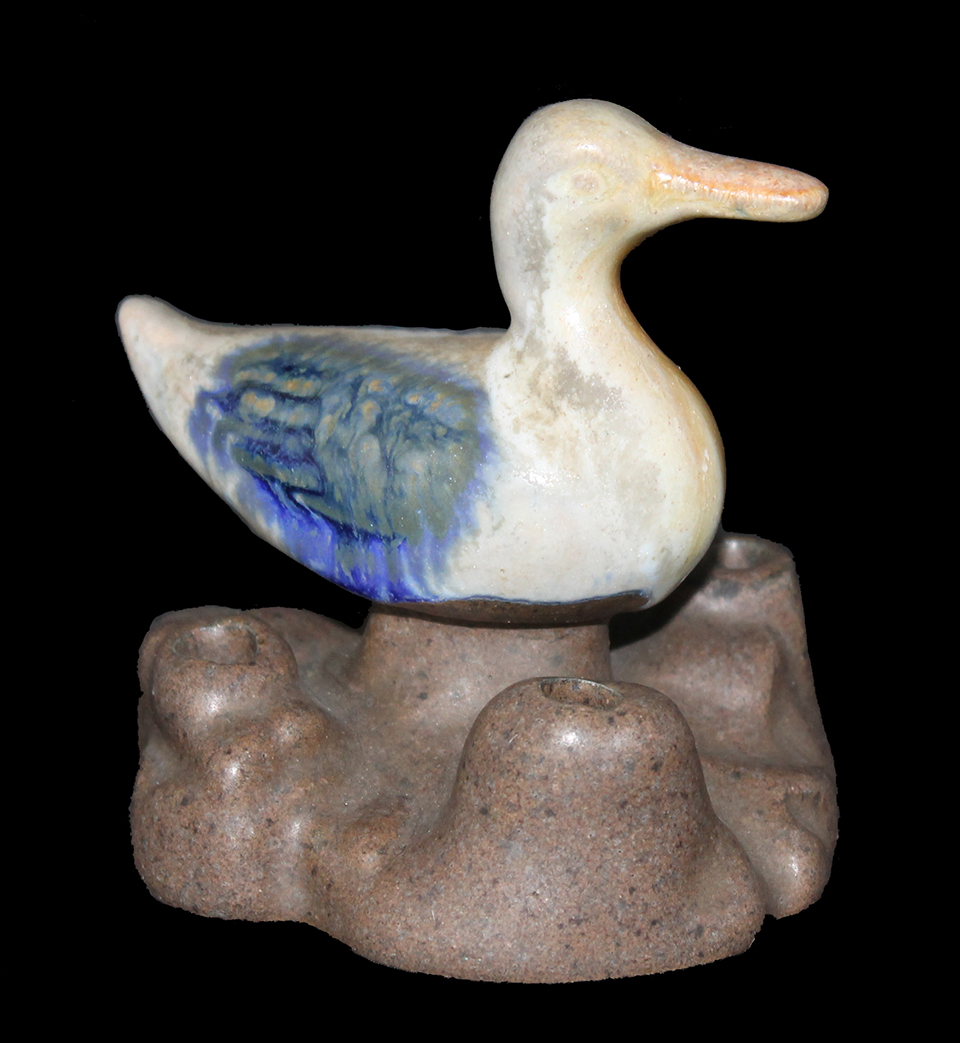
The pottery duck shown above is a frog, or flower holder, made by the Fulper Pottery Company. Fulper Pottery was formally established in 1899 in Flemington, New Jersey, and was originally known for its utilitarian wares for home use. One of their most successful items was a “Germ-Proof Filter” which was intended to improve the quality of drinking water. A decade or two later Fulper Pottery began producing more decorative pieces, such as the one shown here.
Why these pieces were referred to as “frogs” is unknown. One popular theory is that the name derived from the fact that they were intended to sit in water, as a frog might do so. Holes in a frog extended all the way through the piece, allowing flowers arranged in it to be in contact with the water, thereby extending the time during which cut flowers presented a crisp and healthy appearance. Flower frogs became especially popular in the United States in the 1920s, which, based on the maker's mark on the bottom of this piece, is when it was manufactured.
After 1910, Fulper Pottery hired Martin Stangl as their chief ceramist. Stangl began creating art pottery in the style of the arts and crafts movement which was popularized in New England in the late nineteenth and early twentieth centuries. The Society of Arts and Crafts of Boston was established in 1897, and one of the founding figures was Alexander Wadsworth Longfellow, Jr., nephew of the famous poet. His cousin Alice Longfellow, the poet’s daughter, was also a member of the society, and was a collector of arts and crafts style pottery. Alice, who lived in the family’s Brattle Street mansion until her death in 1928, is the most likely candidate for the collector of this item.
